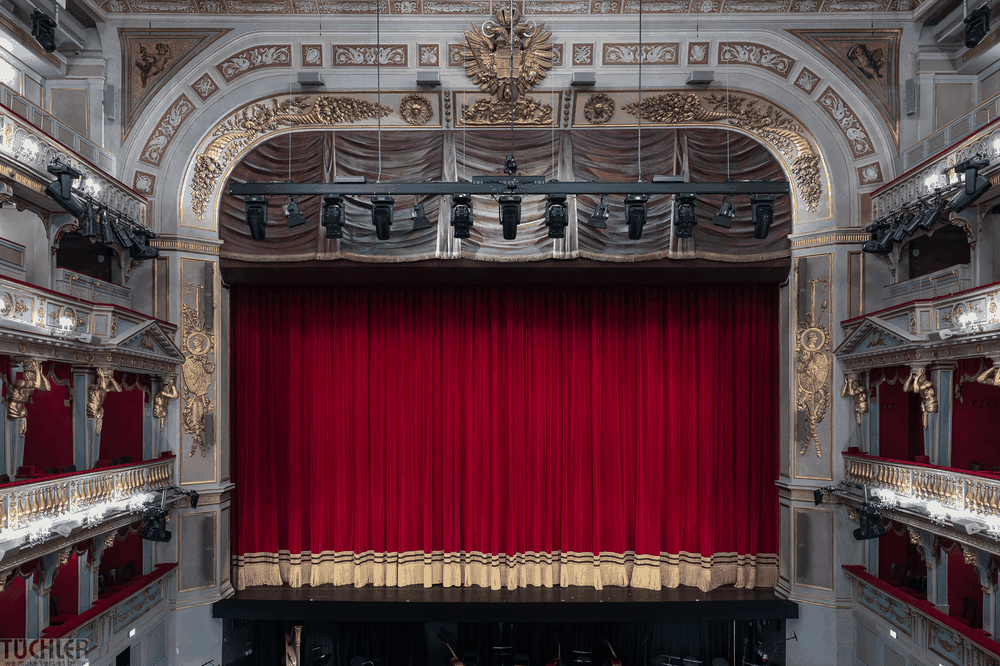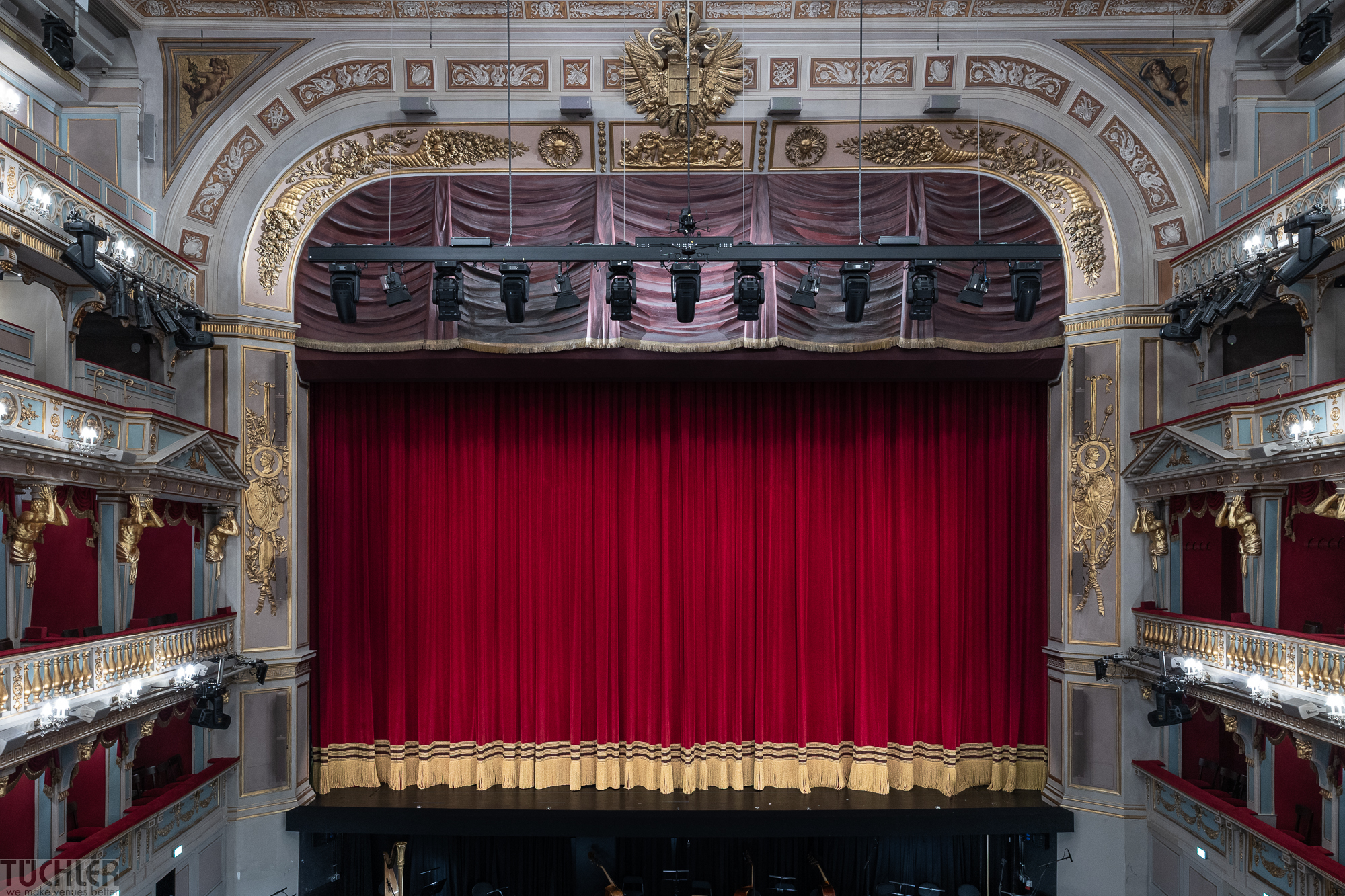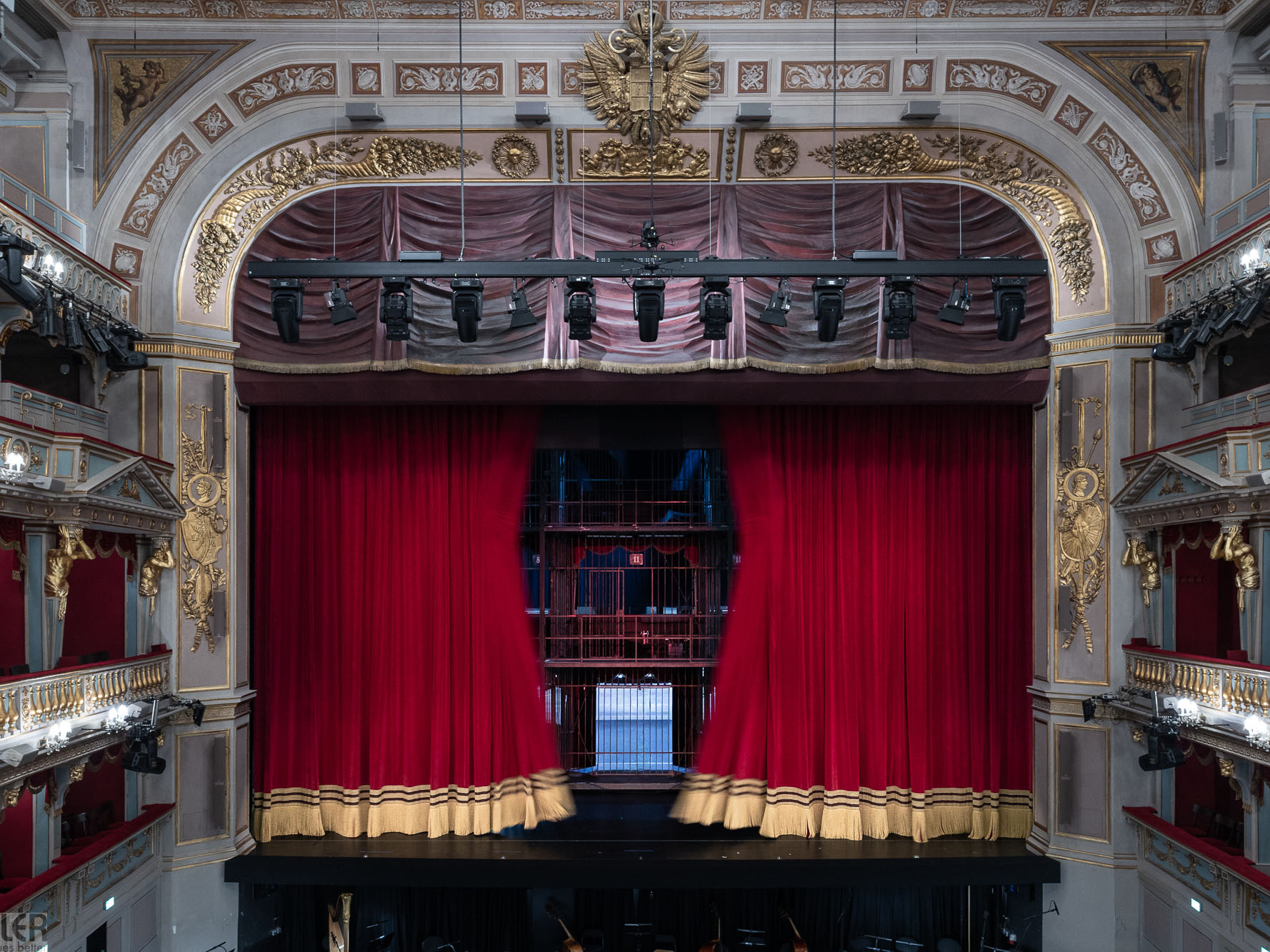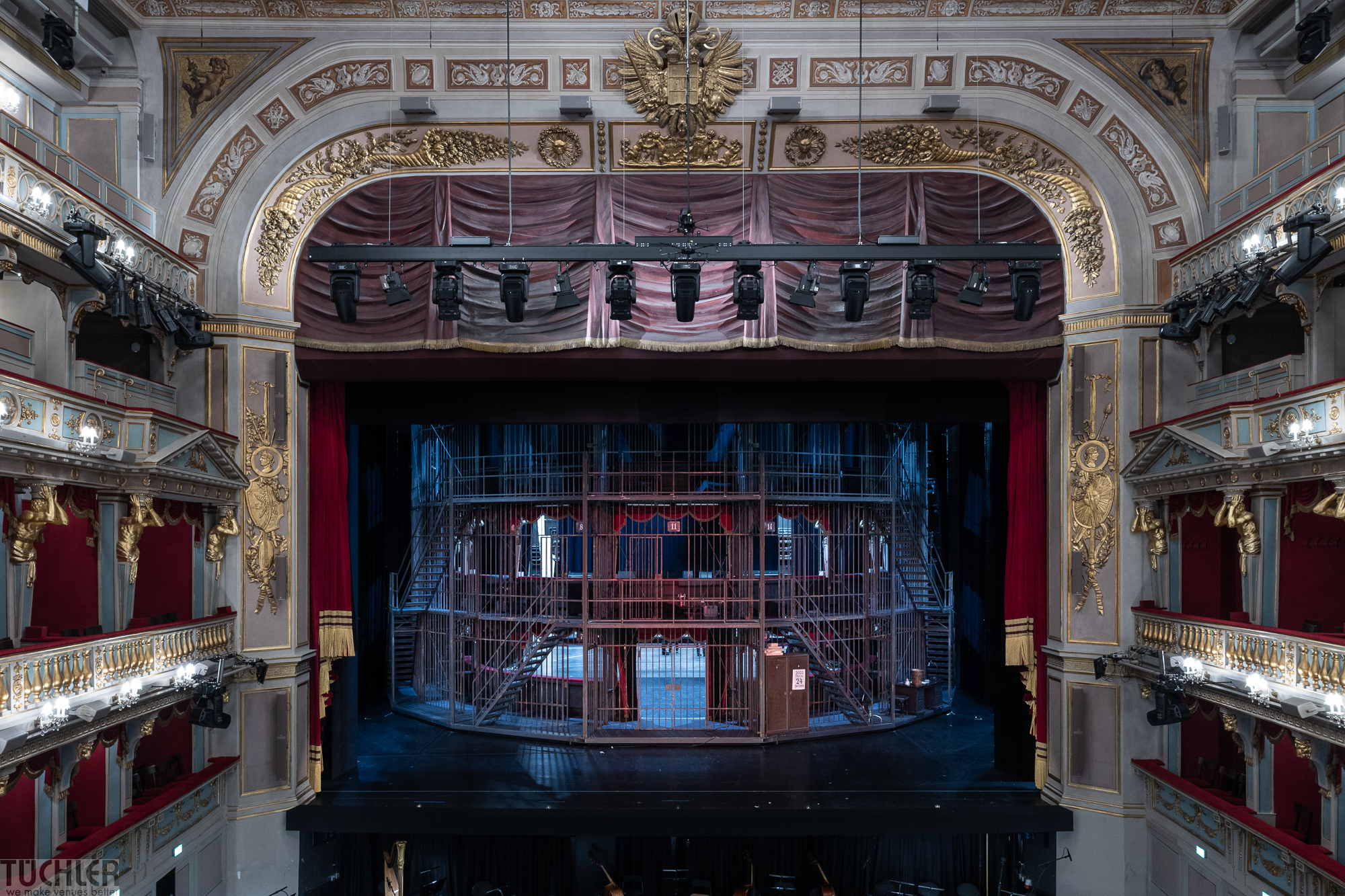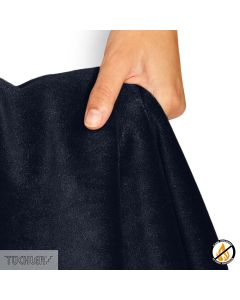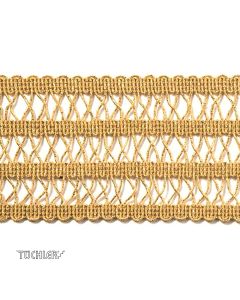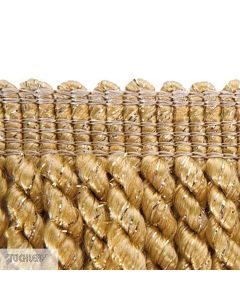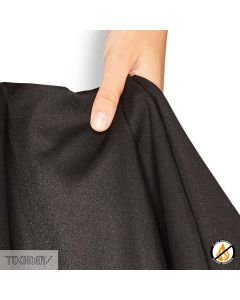Clearly visible: the characteristic “cat’s‑eye” opening of the Wagner curtain, sometimes also referred to as “iris‑shaped”.
The challenge: limited space, bold vision
Since its foundation, Theater an der Wien has operated its main curtain as a so-called German curtain, which opens vertically from bottom to top. This type requires no side pockets, unlike Greek or French-style curtains.
As part of the renovation, Artistic Director Stefan Herheim requested that the new main curtain should also function as a Wagner curtain – a system where the fabric panels open diagonally upwards toward the sides. This presented a remarkable technical and design challenge, as the stage sides at Theater an der Wien offer just around 30 cm of space.
The solution was developed through close collaboration between TÜCHLER, the artistic director, and the in-house stage technology team – not on paper, but hands-on in the theatre space. The ideal cable path was determined step by step, through continuous visual assessment, repositioning of curtain rings, and adjustments until the opening movement worked seamlessly in terms of aesthetics, mechanics, and stage usability.
Additional factors had to be taken into account: visibility of the surtitles display, extremely narrow side stage areas, and the absence of built-in pulley blocks in the proscenium. The final positions of these components were determined by the developed cable curve itself.
This resulted in a system that allows Theater an der Wien, for the first time, to operate the main curtain both as a classic German curtain and a full-featured Wagner curtain – despite the exceptionally tight space conditions.

